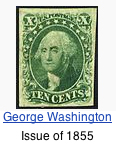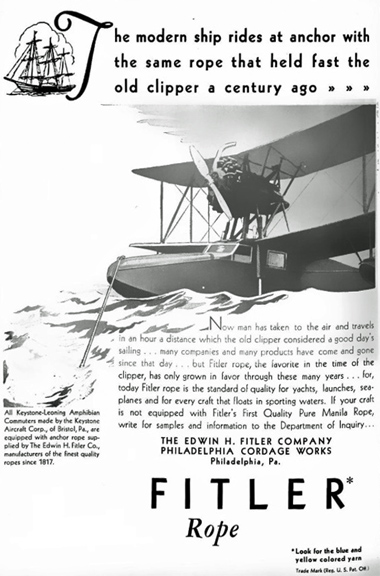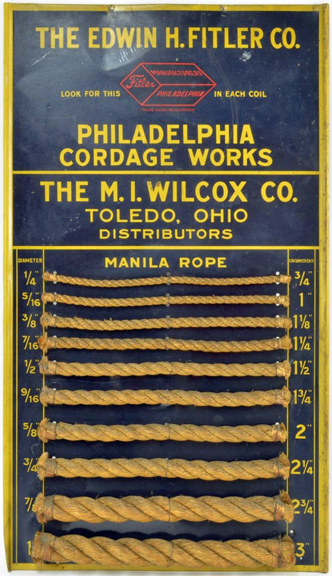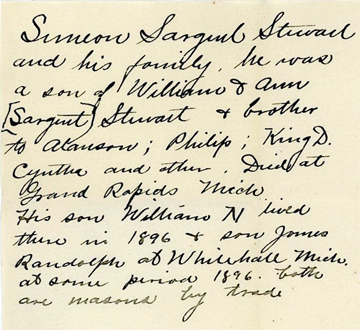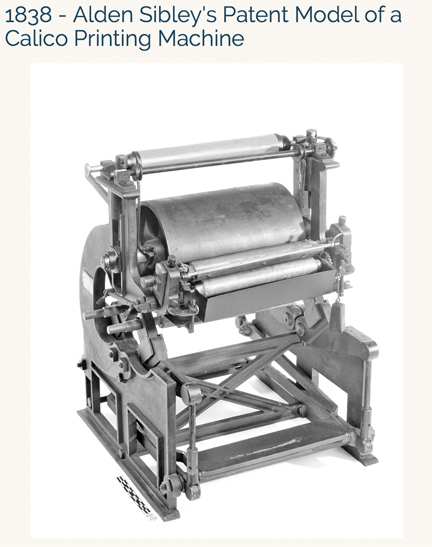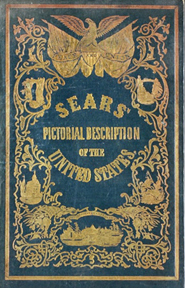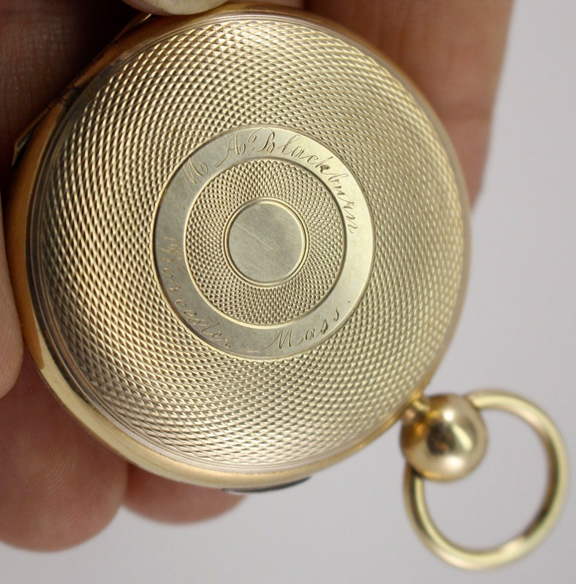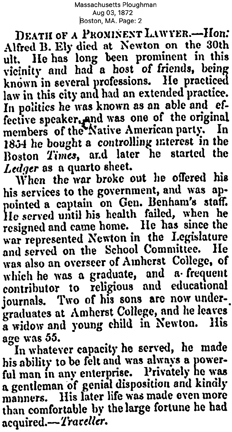Sixth
plate Daguerreotype
portrait of then 26 year old O. W. Pollock
(Otis Wheeler Pollock) of Erie Pennsylvania. This
Daguerreotype of Pollock was taken in 1859. Otis W. Pollock
was born at Erie, Pa., August 7, 1833. He studied surveying
and civil engineering, and at age 18 he was employed in the
construction of the Lake Shore Railroad between Erie and the
Ohio State line, and before he was twenty years of age he was
an assistant engineer on the Ohio and Mississippi Railroad,
and in charge of a subdivision of the construction.
Subsequently he was engaged upon the preliminary surveys of
the Minneapolis and Cedar Valley Railroad in Minnesota. In the
spring of 1861, while engaged in surveying on the little
Kanawha river, in what is now West Virginia, the Civil War
broke out, and he at once entered the service. By that fall he
was made a Lieutenant in the Sixty-third Ohio Infantry.
Pollock was made Regimental Adjutant. Captain Pollock was
transferred to the staff of General Veatch. Pollock took part
in the battles of Janesborough, Resaca, New Hope Church,
Dallas, Kenesaw Mountain, and Atlanta. He barely escaped the
fate of General McPherson. Not more than ten minutes before
the general was killed Captain Pollock was on the same spot,
having, without knowing it, run into the Confederate line, but
managed to get away. He took command of the Sixty-third
Ohio Infantry regiment until the arrival of Sherman's army in
March, 1865. In 1866 he was assigned to the Fourteenth
Infantry, and later the Twenty-third. His subsequent life is
that of an army officer on the frontier, undergoing arduous
trials, subjected to constant changes; at one time conducting
recruits to distant stations, at another establishing military
posts and often pursuing hostile Indians. In 1867-68 he was
with General Crook in the Snake and Pi-Ute Indian wars.
Pollock proceeded to Fort Boise and returned January 1868 with
twenty-six Indians by crossing the Snake River and the Blue
mountains in the middle of an unusually cold winter. He
succeeded in bringing the party through without losing a man
or an animal after a continuous struggle for existence of
three weeks duration. From there he saw service in Kentucky,
and later Fort Vancouver (via San Francisco), being with the
first body of troops that ever crossed the continent on the
Pacific Railroad. Then Camp Warren, and Portland, Oregon. In
November and December, 1870, he was in Sitka Alaska. Then back
to Fort Vancouver, and later Fort Yuma, where he proceeded up
the Colorado River to Ehrensburg, and thence by wagon to
Prestcott, a distance of about one hundred and seventy miles,
and there reported to General Crook. He was given command of
Company "C" at Camp McDowell until July, 1874, when the
regiment was transferred from the Department of Arizona to the
Department of the Platte, with headquarters at Omaha Barracks.
Captain Pollock, with his company, arrived at Omaha Barracks
on September 4, 1874. In May 1876 he was ordered to Sidney
Barracks, on the Union Pacific Railroad, east of Cheyenne. He
had charge of forwarding supplies to the troops in the field
under command of General Crook, who was pursuing the hostile
Sioux. He received orders to Fort Fetterman under General
Crook. He proceeded by rail with two companies to Medicine
Bow, where they marched on to Fort Fetterman. Here what was
known as the Powder Run expedition was organized. The
expedition proceeded to Crazy Woman's Fork of the Powder
river, via the cantonment Reno. General Mackenzie, with his
cavalry, attacked a Northern Cheyenne camp. As a result of the
campaign, the Northern Cheyennes shortly afterwards came in
and surrendered, and Crazy Horse, the Sioux chief, did the
same, and the war was thus ended. The campaign was made in the
coldest winter weather. The troops were constantly on the
march, and in tents when the mercury was freezing and the
animals were perishing from the cold. Captain Pollock
proceeded to Fort Leavenworth. Railroad riots caused the
President to order eight companies of the Twenty-third, under
command of Gen. Jefferson C. Davis, then its colonel, to St.
Louis, including Captain Pollock & his company. In July
1878 he took his company to Fort Hayes, Kansas. In the fall of
that year the Northern Cheyennes, who, after their surrender,
had been located by the military authorities in the Indian
Territory, near Fort Reno, became dissatisfied and broke loose
from the authority of their Indian agent, and attempted to
return to their old home in the North. During their progress
through Kansas they committed many outrages, stealing horses
and murdering the inhabitants. Captain Pollock's company was
ordered from Fort Hayes in conjunction with other troops, to
proceed to a point on the Kansas Pacific Railroad, where it
was hoped that they might be intercepted in their attempt to
cross to the northward. Not-withstanding the watchfulness of
the troops, the Indians succeeded in crossing the railroad
unobstructed. After long and fatiguing forced marches on their
trail in pursuit, and when they had passed into the Department
of the Platte, and were being pursued by fresh troops. Captain
Pollock returned to Fort Hayes. In the winter of 1879 the
Twenty-third was transferred from Kansas to the Indian
Territory. This was for the purpose of having more troops on
hand in case of another attempt on the part of the Indians to
break out as the Cheyennes had done. Captain Pollock's company
marched to the Canadian Civer near Sheridan's Roost. After 6
months leave he was ordered to Colorado for the purpose of
keeping quiet the Ute Indians in the vicinity of Los Pines
Agency, who had been restless, and restore confidence to the
settlers. This was the summer of the "Ute Commission." Captain
Pollock's company was detailed to be their escort. He left Los
Pinos Agency with the commission, having four six-horse wagons
loaded with forage, rations and camp equipage, and two
four-mule light wagons. They crossed the San Juan range at an
altitude of twelve thousand feet to Silverton, encountering
great hazard of losing the wagons, owing to the difficulty of
preventing them from running off the beaten track along the
edge of the mountains, which was narrow and crooked, into the
canon hundreds of feet below. From Silverton the route was
down the Animas River to Animas City, thence across the
Florida River to the agency situated on the Pine River, which
they reached August 15th. From here the commission,
accompanied by Captain Pollock, made a reconnoissance in
search of a suitable place in which to locate the Utes after
their removal, and, after following the La Platte to its
confluence with the San Juan River, returned to the agency.
Having completed negotiations with the Indians, the commission
was escorted to Alamosa, and upon arriving at that place
Captain Pollock separated from them and returned with his
company and transportation by another route to the cantonment,
located during his absence on the Uncompahgre River, about
four miles below the Los Pinos Agency. He reached Klein's
ranch on the Cimmaron River, about twenty-two miles from the
cantonment, the day following the killing of Johnson, a Ute
Indian, son of one of the prominent chiefs (Chavanaux), by a
freighter named Jackson, who was subsequently forcibly taken
by the Indians from the civilian escort, who were conveying
him to Gunnison City for trial, and killed. This resulted in
the most intense excitement among the white population, and
open war between the whites and Indians became imminent. The
report of the affair made by Captain Pollock to the War
Department, showing it to have been a wanton murder on the
part of Jackson, and that his fate was nothing more than a
case of lynching, which was published in the papers throughout
the country, no doubt had the effect of quieting the
excitement and preventing an outbreak. Back at the cantonment,
he was Superintendent and Chief Operator of the telegraph line
which had been constructed by the troops to Gunnison City,
receiving and transmitting all the messages passing between
Generals Pope and Mackenzie relating to the final arrangements
for conveying the Utes from Colorado to Utah, which, though a
delicate affair, was successfully and peaceably accomplished.
In the fall of 1881 his regiment was ordered to the District
of New Mexico, Captain Pollock with his company going to Fort
Bliss, about a mile above El Paso, on the Rio Grande. In June,
1884, the regiment was transferred to the Department of the
East, and occupied the posts at Fort Porter, Buffalo; Fort
Brady, Sault-ste-Marie, and Fort Mackinac. Captain Pollock's
company was stationed at Fort Porter, where it still remains.
Otis Wheeler Pollock retired with the rank of Lieut. Colonel.
See the book “The Deadliest Indian War in the West: The Snake
Conflict, 1864-1868” By Gregory Michno.
Sixth
plate Daguerreotype portrait (2 3/4 by 3 1/4 inches)
portrait of
Revolutionary War soldier Silas
Bemis of Haverhill, New Hampshire, taken
around 1847. Silas Bemis was born
in 1761 in Winchendon, Massachusetts. He mustered in at
Worcester County, Massachusetts,
for service in Captain
Boynton's Company, Colonel
Grout's Regiment, and also had service in Captain Thomas Fish's Company, Colonel Nathan Tyler's
Regiment. Silas Bemis died in Haverhill, New Hampshire, in
1850 at age 89. He was
buried in Center Haverhill Cemetery in Haverhill, New
Hampshire.
Sixth
plate
Daguerreotype
portrait (2
3/4 by 3 1/4
inches) of Revolutionary
War
soldier
Jonathan Smith.
He was 14 when
he joined the
American
Revolution, Massachusetts
militia,
in 1776. He
signed up for
more duty,
off and on, throughout
the
war, and
was at
the Battle of
Rhode Island.
In a Boston
"push-button"
case.
Quarter plate Daguerreotype portrait, by
Henry E. Insley, of Revolutionary War soldier John
Battin who was born in 1752. This Daguerreotype was
probably taken on the occasion of his 100th birthday.
The drawing at right was taken from this very
Daguerreotype (Lossing Vol 2, page 621 or 827 depending
on edition). From Benson J. Lossing's Pictorial Field Book Of
The Revolution, volume 2, chapter 23: "Of all
the gallant men who battled there on that day [the
Battle of Fort Washington, November 16, 1776], not one
is known among the living [published in 1859]. Probably
the last survivor of them all, and the last living relic
of the British army in America, was the venerable JOHN
BATTIN, who died at his residence in Greenwich Street,
in the city of New York, on the twenty-ninth of June,
1852, at the age of one hundred years and four months.
His body is entombed in Trinity Cemetery, upon the very
ground where he fought for his king seventy-six years
before.... Mr. Battin came to America with the British
army in 1776, and was engaged in the battles near
Brooklyn, at White Plains, and Fort Washington. After
the British went into winter quarters in New York, and
Cornwallis’s division (to which he was attached),
returned from Trenton and Princeton, he took lessons in
horsemanship in the Middle Dutch church (now the city
post-office), then converted into a circus for a
riding-school. He then joined the cavalry regiment of
Colonel Birch, in which he held the offices of orderly
sergeant and cornet. He was in New York during the "hard
winter" of 1779-80, and assisted in dragging British
cannons over the frozen bay from Fort George to Staten
Island. He was always averse to fighting the Americans,
yet, as in duty bound, he was faithful to his king.
While Prince William Henry, afterward William the
Fourth, was here, he was one of his body-guard. Twice he
was sent to England by Sir Henry Clinton with
dispatches, and being one of the most active men in the
corps, he was frequently employed by the
commander-in-chief in important services. With hundreds
more, he remained in New York when the British army
departed in 1783, resolved to make America his future
home. He married soon after the war, and at the time of
his death had lived with his wife (now aged
eighty-three) sixty-five years. For more than fifty
years, he walked every morning upon first the old, and
then the new, or present Battery, unmindful of inclement
weather. He always enjoyed remarkable health. He
continued exercise in the street near his dwelling until
within a few days of his death, though with increasing
feebleness of step. The gay young men of half a century
ago (now gray-haired old men) remember his
well-conducted house of refreshment, corner of John and
Nassau Streets [lower Manhattan], where they enjoyed
oyster suppers and good liquors. The preceding sketch of
his person is from a Daguerreotype by Insley, made a few
months before his departure."
See also:
https://en.wikipedia.org/wiki/Battle_of_Fort_Washington
"Mr. Brower was married at New York city, in May, 1850,
to Anna C., youngest daughter of John Battin, a soldier
of the British army, who came to this country during the
War of the Revolution, with Admiral Lord Howe, who
appointed him, with others, as body guard to Prince
William Henry, afterwards King William IVth, who was
then a midshipman in the British navy, and on a visit to
this country. He served during the war, and when the
British troops evacuated, he had become so infatuated
with America, that he was not found amongst the soldiers
that returned home. He lived to the remarkable age of
100 years, and up to the last year of his life, clung to
the old-fashioned costume of white stockings, and knee
breeches." (from: History of Crawford and Richland
Counties, Wisconsin. Union Publishing Company,
Springfield, IL. 1884. By Consul Willshire Butterfield.)
I also have one of John Battin's diamond-encrusted knee
buckles that he used to keep his socks attached to his
knee breeches. See photo on right.
The Museum
of the American Revolution borrowed this image from me
and told me that it’s the only known daguerreotype of
a British soldier who fought in the American
revolution.
|

|
Sixth plate Daguerreotype
portrait (2 3/4 by 3 1/4 inches) by
Daguerreotypist James P. Weston, 192 Broadway, New York City,
of Captain William Sheffield of Stonington & New Haven,
Connecticut. Captain William Sheffield was born in Stonington
on July 6, 1785. He comes from a long line of sea captains,
and a long line of William Sheffields (his father and son and
grandson were all named William Sheffield). His mother was
Elizabeth Eells, and he married Keziah Gillette.
Sixth plate
Daguerreotype
portrait (2 3/4 by 3 1/4 inches), in a very
nice Union Case, of General Micah Brooks, who was born May 14,
1775, on his father’s estate in Cheshire, Conn. Micah Brooks
gave from his own recollection, a very interesting account of
the period immediately following the Revolutionary War, and it
was published in History of the pioneer settlement of
Phelps and Gorham's purchase... by O. Turner. In
1796 in common with many sons of New England, he explored the
regions of the west, visited the Mohawk, Susquehannah. Seneca,
and the Genesee, and saw many pioneers in their lonely cabins,
suffering privations but full of hope. In the fall of 1797 he
lived in East Bloomfield (New York) as a school teacher. He
became a surveyor. In the fall of 1798 he made a tour, on foot
to Niagara Falls, following the Indian trails and stopping
overnight with Poudry and his Indian wife at Tonawanda. In
1799 he purchased a farm in East Bloomfield. In the militia he
rose through successive gradations to the rank of Major
General. In 1806 he was elected Justice of the Peace, in 1808
assistant Justice of the County, the same year was elected to
the Legislature from Ontario County, and in the War of 1812 he
served in three campaigns as a Lieut. Colonel. He was elected
to Congress in 1814, representing a very large territory and
serving on important committees. For twenty years he was a
Judge of Ontario county courts. While a member of Congress he
presented to that body a petition drawn by DeWitt Clinton,
asking the national government to aid in the construction of
the Erie Canal. On February 1, 1839, delegates from several
counties assembled at Cuba, Allegany County, to forward the
completion of the New York and Erie Railroad, which had been
chartered seven years before, but which, owing to the great
commercial revulsion of 1837, and the magnitude of the
undertaking, had not been completed. Gen. Brooks was chosen
president of the convention. In 1823 he moved to his new
residence known as Brook’s Grove. In 1833 he bought 6,382
acres in Caneadea, Allegany Co. He died on July 7, 1857.
Sixth plate Daguerreotype portrait (2 3/4 by 3
1/4 inches) of Charles N. Wallis, of Beverly, Mass, taken
circa 1850. Charles N. Wallis was a carriage maker and a
wheelwright. He died in 1873.
Sixth plate
Daguerreotype
portrait (2 3/4 by 3 1/4 inches) of
9 year old Lyman Eckford Post (Jr.) of Westbrook, Ct.
He became a farmer. The family farm was on the
Westbrook shore. His father was Capt. Lyman Eckford
Post also of Westbrook. The dag is dated Sept 15,
1849. In 1897 there was a notice in the Connecticut
Quarterly that the articles made from the famous
Charter Oak Tree, that were exhibited at the
Centennial Exposition in 1876, were at the home of
Lyman Eckford Post, and were to be sold. In the Aug
24, 1911, Springfield Republican newspaper was the
notice that "W.F. Heins went on a fishing trip last
week just off of Southwest Reef. He went with Lyman
Post in the latter's 30 foot launch. A fine string of
14 blackfish were brought in weighing between three
and seven pounds." (I used to fish Southwest Reef
myself, for bluefish on 4 pound test line, in my
Brockway high-sided rowboat with 10hp Mercury, in the
1960's). It's a small world.
|

|
Early 1840s sixth
plate daguerreotype
portrait of a man holding what appears to be
a gilt pencil, and displaying a bound volume of The Ladies
Companion, volume XII & XIII. The
daguerreotype is by Thomas S. Walsh, New York City. In
original period case with WALSH imprint on brass mat and
imprint on case pad reading "Walsh 136 Spring Street, N.Y."
The daguerreotypist Walsh is documented at 136 Spring Street
during 1845 and 1846, according to Craig's Daguerreian
Registry. However the image may well be somewhat earlier; its
plate bears the early "HS" platemark which Rinhart dates
1843-45, and the numbers of the Ladies Companion which
the sitter holds were published 1839-1840. This is presumably
a portrait of William W. Snowden, the publisher of the Ladies
Companion, who died January 12, 1845. Both Thomas S. Walsh and
William W. Snowden had offices in lower Manhattan, only a mile
apart. William W. Snowden knew Edgar Allan Poe and published
one of his stories. "The Mystery of Marie Rogêt", often
subtitled A Sequel to "The Murders in the Rue Morgue." Poe
wrote the piece in 1842. This is the first murder mystery
based on the details of a real crime. It first appeared in
William W. Snowden's "Ladies' Companion" in three
installments, November and December 1842 and February 1843. In 1844, Millett v. Snowden became the
earliest music copyright lawsuit in the United States. Snowden
published “The Cot Beneath the Hill”, without permission, in
his Ladies Companion, and had to pay $625 to the owner of the
song.
Sixth plate daguerreotype
portrait (2 3/4 by 3 1/4 inches) of Olive
Gurley Goodell, who was born during the Revolutionary War and
turned 6 years old about 3 weeks before the war ended in 1783.
A note with the daguerreotype states "Olive Gurley, wife of
Levi Goodell father of Abner Gooddell, born 1777." Olive was
born August 6, 1777. Olive was the daughter of Jonathan Gurley
who was born in 1744 in Mansfield Ct. Her mother was
Jerusha Bennet, daughter of Joseph Bennet of the same town.
They married in 1764. Olive's siblings included, Ephraim,
Roger, Jonathan, Anna, Jerusha, Esther, Rebecca, Flavel, an
infant brother and Harriet. Olive's father, Jonathan Gurley,
resided in the neighborhood of the Gurley burying ground. He
was a Captain of a Military Company and a member of the
Congregational Church. Olive married Levi Goodell, son of
David and Hannah Abbott Goodell. Levi was born in 1772 in
Woodstock Ct. At some point the Goodell's moved to
Westminster, Windham Co, Vt, where Levi died in 1813. Their
family included: Azuba b 1796; Harriet b 1798; Horace b 1800;
Eliza born 1802; Jerusha b abt 1803 married Calvin Phippen;
Abner b 1805 (appearing to be the child whose family owned the
daguerreotype); Clarissa b 1807; Orvilla Electa b 1809; and
Mary Paine b 1811.
Sixth plate
daguerreotype
portrait (2 3/4 by 3 1/4 inches) of Colonel
Drury Fairbank (a.k.a. Drury Fairbanks) of Sudbury,
Massachusetts, and his wife Mary. Drury Fairbank was born July
22, 1793. His father was Jonathan Fairbank, who was born in
Holliston, Mass, lived in Sudbury, and marched to Lexington at
the start of the Revolutionary War. The father enlisted April
19, 1775 for the "alarm at Lexington."
Colonel Drury Fairbank was born in Sudbury, July 17, 1793. He
lived for five years in Boston, and worked for Blake &
Jackson, soap and candle chandlers. He settled in Sudbury in
Oct. 1820, on a farm, and lived there until his death. He was
colonel of militia, justice of the peace, held various town
offices, and took an active part in politics and parish
affairs.
He was an active promoter of measures for the erection of a
monument in Sudbury, to the memory of Capt. Wadsworth and his
men, twenty-seven in number, who were killed in King Philip's
War, Apr. 18, 1676. He died very suddenly of heart
disease, May 25, 1864, aged 70 yrs. 10 mos. 8 days. His
children were all born in Sudbury, except Nelson.
He married Mary Spring, of Hubbardston, Mass., Oct. 26, 1817.
She died Feb. 15, 1864, aged 67 yrs. 7 mos.
Sixth
plate daguerreotype
portrait (2 3/4 by 3 1/4 inches) of Edward
Newton Wills, of Newburyport, Mass. He was one of the 12
children of Captain John Wills, Jr., and Sarah Newman. Edward
Newton Wills' father died in 1835 when he was about 11 years
old. Edward Newton Wills (Edward N. Wills) was born in 1824
and died in Calcutta, India, on Sept. 1, 1846, of rapid
consumption. He was 22 1/2 years old. I know that he made at
least two trips to Calcutta from Newburyport. He arrived back
in Newburyport on October 2, 1845, on the ship Arno,
from Calcutta. He made another trip to Calcutta and died
there. I'm researching the Wills family of Newburyport, and I
must say that they are a very confusing family, genealogically
speaking. If anyone has sorted them out, I'd love to hear form
you!
Sixth
plate daguerreotype
portrait (2 3/4 by 3 1/4 inches) of Risley
Quarter
plate Daguerreotype
portrait ( 3 1/4 by 4 1/4 inches) Gushee,
Frederick A.
Sixth
plate Daguerreotype
portrait (2 3/4 by 3 1/4 inches) of George
Beatty who was born in Bally-Keel Ednagonnell, county Down,
Ireland, in 1781. In the summer of 1784 his parents brought
him to America where they settled in Harrisburg, Pennsylvania.
George Beatty received a regular school education, and later
worked with his brother-in-law, Samuel Hill, from whom he
learned clock and watch making. Referred to as an "ingenious
mechanician," George Beatty is remembered for his clocks of
"peculiar and rare invention." It was presumably this business
in which he was active for more than 40 years. He was also
known to be a silversmith. James Biser Whisker in his book
Pennsylvania Silversmiths, Goldsmiths and Pewterers, 1684-1900
has a short paragraph on George Beatty (1781-1862). Mr. Beatty
served in the War of 1812 as a sergeant in Captain Thomas
Walker’s volunteer militia. This daguerreotype came in a
collection of daguerreotypes from his daughter and son-in-law,
Immanuel Meister Kelker.
Stunning
sixth plate daguerreotype
portrait (2 3/4 by 3 1/4 inches) of Almira
Dickens, who lived at Watch Hill Point, Rhode Island, in the
1850's. This daguerreotype was taken about 1850. Almira
Dickens was the daughter of Captain Henry Dickens of
Stonington & Watch Hill Point, and Nancy Nash, the
daughter of Captain Jonathan Nash, also of Watch Hill Point.
Sixth plate daguerreotype portrait (2 3/4 by 3 1/4
inches) of Harrison Gray Blake, born 1788, famous as
the husband of Lucy Blake who perished on Green
Mountain, in Vermont, on Dec. 20, 1821, known as the
Stratton Mountain Tragedy. Lucy Blake was able to
protect her 18 month old daughter by wrapping her in
coats. The baby survived and Harrison Gray Blake
suffered severe frostbite and lost 4 toes. The poem,
"A Mother’s Sacrifice", by Seba Smith, became very
popular and inspired the 1843 song "The Snow Storm"
which itself became famous and was performed at the
concerts of the Hutchinson Family: "Oh, God she cried
in accents wild, if I must perish, save my child."
Harrison Gray Blake's father, James Blake, worked in
his father's tinsmith shop in Boston before the
Revolutionary War. James and his father, Increase
Blake, participated in the Boston Tea Party, and James
stuffed his overgrown shoes (he was wearing his
father's shoes) with tea for his mother, which became
very scarce when the fighting began. Increase Blake
and James Blake, grandfather and father of Harrison
Gray Blake, the subject of the daguerreotype, made
canteens and cartridge boxes for the patriots during
the Revolutionary War.
|
|
|
The
Snow Storm, A Ballad
Poetry by Seba Smith, Music by L.
Heath
(Boston: Oliver Ditson, 1843)
The cold wind swept the mountain's
height,
And pathless was the dreary wild,
And mid the cheerless hours of night
A mother wandered with her child.
As through the drifted snows she
pressed,
The babe was sleeping on her breast,
The babe was sleeping on her breast.
And colder still the winds did blow,
And darker hours of night came on,
And deeper grew the drifts of snow--
Her limbs were chilled, her strength
was gone.
"O God!" she cried, in accents wild,
"If I must perish, save my child,
"If I must perish save my child."
She stript her mantle from her breast,
And bared her bosom to the storm;
As round the child she wrapped the
vest,
She smiled to think that it was warm.
With one cold kiss, one tear she shed,
And sunk upon a snowy bed,
And sunk upon a snowy bed.
At dawn, a traveller passed by,
And saw her 'neath a snowy veil--
The frost of death was in her eye,
Her cheek was cold, and hard and
pale--
He moved the robe from off the child;
The babe looked up, and sweetly
smiled,
The babe looked up, and sweetly
smiled. |
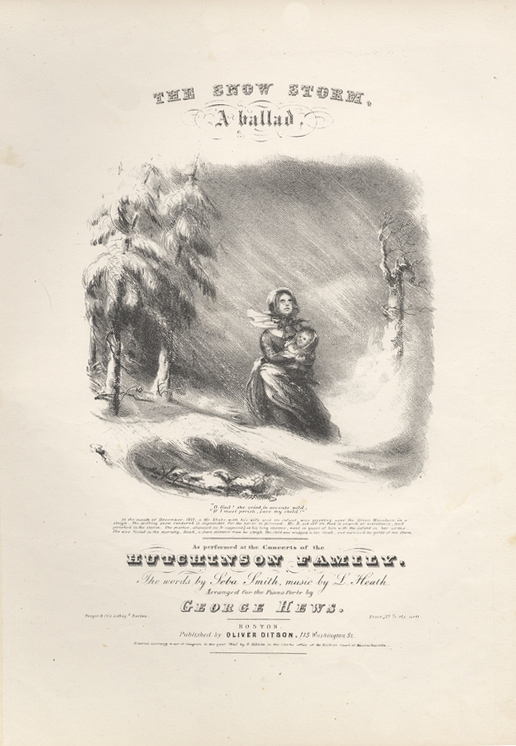
|
Ninth
plate daguerreotype portrait (2 by 2.5 inches) of Matthew
Clarkson, Jr. (1796-1883), who was a prominent resident of
Flatbush, Long Island, N.Y.
The dag is marked "Taken By Root Broadway NY 1853." His
father, Matthew Clarkson Sr. (1758-1825) was an American
military officer during the American Revolution and lived in
New York City.
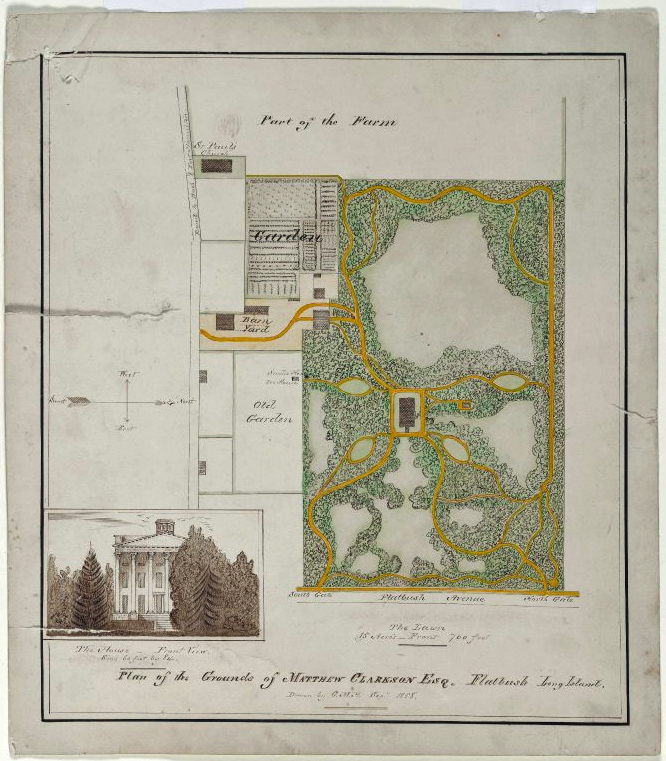
Plan of the Grounds of Matthew Clarkson, Esq. Flatbush Long
Island
Medium: Ink and watercolor on paper
Dates: September 1858
courtesy of the Brooklyn Museum Collection
Sixth plate
Daguerreotype
portrait (2 3/4 by 3 1/4 inches) of an
older man identified inside the case as Ebenezer Turner of
Quincy, Illinois. Ebenezer Turner was in the Black Hawk
war of 1832. He was a private in Colonel Fry's Second
Regiment, Captain William Flood's company, from Adams
County.
Sixth plate Daguerreotype portrait (2 3/4 by 3 1/4 inches)
of Joseph H. Burgess who went overland to the California
gold rush in 1849 (he claimed to be one of the first
overlanders to arrive at Sacramento, Sutter's Fort, etc),
and later drove cattle north from Texas. I also have a
later ninth plate ambrotype of him. Joseph H. Burgess
married Helen J. Woodward in circa 1839. See the article
"Grandfather Burgess Was a Forty-Niner" at page 404 in
Journal of the Illinois State Historical Society, Vol. 53,
No. 4, (Winter 1960).
https://dig.lib.niu.edu/ISHS/ishs-1960winter/ishs-1960winter-toc.pdf
Joseph H. Burgess had
a "Distinguished Service" for the Union in the Civil War.
He enlisted in Company I, 11th Illinois Infantry Regiment
on 20 September 1861. Discharged Company I, 11th Infantry
Regiment Illinois on 02 May 1862.
Sixth plate Daguerreotype portrait (2
3/4 by 3 1/4 inches) of Jonas Baker and his wife Phebe
Baker (Phebe Goodell). They lived at Warren's Corners,
Lockport, N.Y. They "adopted" Joel B. Baker. The
son was in the Civil War; his letters were published
in 1996 under the title "Letters Home, Joel B.
Baker: A collection of letters home from the Civil
War written by Colonel Joel B. Baker and compiled by
his great-grandaughter, Naomi B. Baker."
Compelling Sixth plate Daguerreotype
portrait (2 3/4 by 3 1/4
inches) of George C.
Bain holding his four month old son Patterson Bain, taken
in 1850 in St Louis. This collection includes
four other daguerreotypes from the Bain family
of St. Louis and Lexington, Kentucky. George
C. Bain was nursed/raised by his family's
slave, Harriet Bell, who ran away in 1844 with
her husband Lewis Hayden, never to be seen by
the Bains again. About 45 years later George
C. Bain placed a notice in the newspaper
stating that he wanted to contact Harriet.
Here are some newspaper clippings pertaining
to this:
https://alaskawanted.com/daguerreotypes/BainClippings.jpg
see also:
https://en.wikipedia.org/wiki/Lewis_Hayden
Not surprisingly George C. Bain fought for the
south in the civil war as a Lieutenant and
later a Captain in the Department & Army
of Tennessee.
Harriet Hayden's grave:
https://tinyurl.com/k74huln
More on the story of Lewis and Harriet
Hayden: https://tinyurl.com/o5pqeo4
Captain George C. Bain's Confederate Cipher
Reader:
https://www.civilwarmo.org/gallery/item/CWMO-16?nojs=1
At right is half of the daguerreotype case
showing the silk pad that is opposite the
daguerreotype of George C. Bain holding his
four month old son Patterson Bain.
|
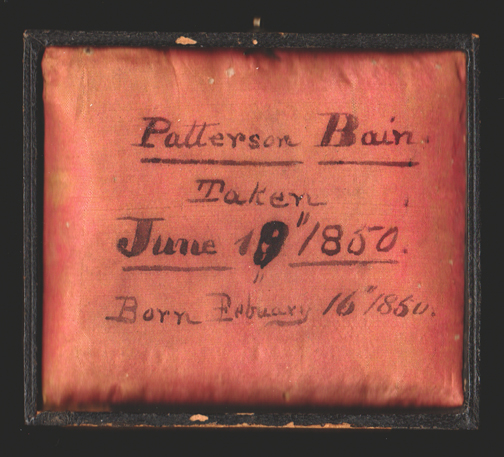
|
Excellent daguerreotype in fine condition, taken when he was 19
years old.
